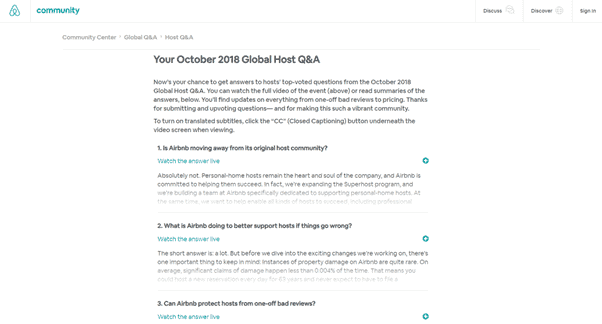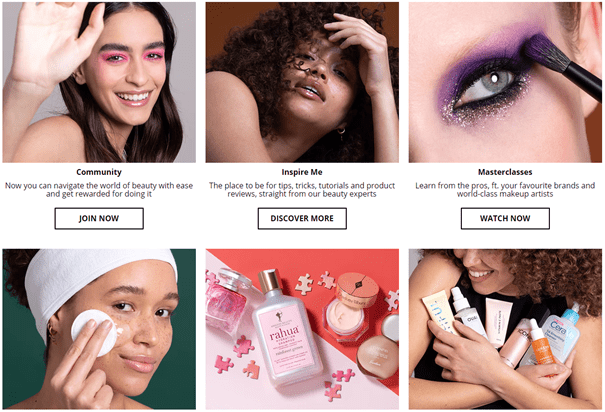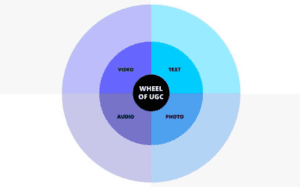User-generated content (or UGC) is any content created by web users and shared online, via social media platforms, for example. Brand content, on the other hand, is content that is traditionally created by the brands themselves. When a web user posts a photo, a video, a comment, a review, or an answer on a forum...
User-generated content (or UGC) is any content created by web users and shared online, via social media platforms, for example. Brand content, on the other hand, is content that is traditionally created by the brands themselves. When a web user posts a photo, a video, a comment, a review, or an answer on a forum that relates to your brand in some way, they’ve created content and are contributing to the visibility of your brand and products.
So what are the types of UGC you can leverage in your marketing right now to build trust and drive sales? Here’s an overview of the user-generated content currently available to you:
— Text-based UGC, the “traditional” format

Consumers are increasingly keen to share their experiences. International market research group IFOP reports that 90% of consumers read customer reviews before deciding to buy something online! And according to a recent survey on online reviews, reviews consultations have increased by an average of 45% since 2020. These reviews are conversion levers – not just on e-commerce sites, but also on search engines, since these now include star ratings in their search results.
Forums and blogs
Forums and blogs are important user-generated content platforms. Because search engines love long-form content, these pages easily rank higher, putting them in a strong position to influence the decisions of consumers who research online before pulling the trigger on a purchase. The Q&A forum Quora receives 300 million unique visitors each month and answers ultra-specific questions from web users about all sorts of topics. People visit the forum looking for anything from theoretical and academic knowledge to feedback on consumer goods or the products and services of major brands.

Q&A
These days, many brands co-create their Q&A sections with their customers. This allows them to identify the questions that are truly important to their consumers, improve their understanding of their audiences, and provide useful answers to their communities.
As an example, every three months, Airbnb hosts a Q&A session with its community of hosts to answer any questions they have. These Q&A sessions are then published on the Airbnb community website.

Community chats
Community chats or C2C chats are starting to spring up on e-commerce sites. They’re small chat windows that pop up during your visit. Until recently, there was always a customer service rep on the other end. But now, some brands are offering solutions that are similar to a traditional chat, only with a customer on the other end.

— User-generated photos are all over social media
The classic social platforms are teeming with user-generated photos
Instagram, Facebook, Pinterest (among others) are an endless sources of user-generated photos. In 2017 alone, 1.2 billion photos were taken, 85% of them with a smartphone.
Now, there are photo curation tools available to capture all this content and share it on brands’ marketing channels and platforms (walls, social media, product pages, etc.).
And because consumers (and marketers) are tired of stock photos, user-generated photos are a great alternative. In fact, sometimes they’re a brand’s top choice for communicating with authentic and striking images.
New players specializing in user-generated photos for e-commerce
You might’ve heard of 21 Buttons? It’s a social network founded in Barcelona in 2015 and available in France since 2018. A cross between a social media platform and a marketplace, this network allows consumers – or “Buttoners” – to post their looks and earn a commission from the sales they generate.
— User-generated audio content, still in its infancy
Today, user-generated audio hadn’t really caught on yet. But in the future, we can easily imagine user-generated podcasts and different marketing apps for voice assistants.
— User-generated video content is becoming the norm
Product tests and demos
With the advent of social media and mobile technology, consumers now always have a device on hand that allows them to record, edit and publish high-quality videos in just a few minutes. So it’s becoming really easy to share a review or an experience with a product or service to guide other consumers in their buying decisions. As an example, here’s a video of a customer sharing his experience of a product he bought on the Cultura website:

Unboxings and hauls
Over 18 million unboxing and haul videos were uploaded to YouTube in 2018.
Appearing for the first time in 2006, an unboxing is when someone films themselves opening a recently-bought product and sharing their experience on social media. From the technical features to the packaging, everything is covered in detail. Haul videos are based on the same principle: vloggers present the purchases (cosmetics, clothing, homewares, etc.) they’ve just pulled out of their shopping bags.
While these types of videos used to be the preserve of influencers, they’ve now become widespread and many consumers are sharing their shopping experiences in videos online.
Tutorials and how-tos
Here the approach is more educational: consumers share their videos to explain how to use a product. Below is an example where Leroy Merlin brand leverages user generated how to videos to show how their products work :
New formats that are transforming video creation
Stories are no longer a “new” format, but they’ve clearly changed the way people consume and share on social media and on the web in general.
You’ve no doubt also heard of the TikTok phenomenon. In 2018, it was the fourth most downloaded non-gaming app in the world on the Apple Store and Google Play, ahead of Instagram and Snapchat. The app allows users to create 15-second video clips to music, and it is representative of a new type of short video app that took the Chinese market by storm two years ago and has now spread to the USA and Europe.
In short, user-generated videos are evolving and changing. With each new format, consumers are getting more and more used to making videos.
— TLDR. Can you give me a rundown?
To sum up, user-generated content formats are multiplying and evolving and consumers are increasingly relying on this type of content to guide their buying decisions. In fact, 85% of consumers report being more influenced by UGC than by brand content. Text, photos, audio, videos… Marketers can choose the best formats to reach their audiences with authentic content throughout the customer journey.
To sum up, user-generated content formats are multiplying and evolving, and consumers are increasingly relying on this type of content to guide their buying decisions. In fact, 85% of consumers report being more influenced by UGC than by brand content. Text, photos, audio, videos… Marketers can choose the best formats to reach their audiences with authentic content throughout the customer journey.








